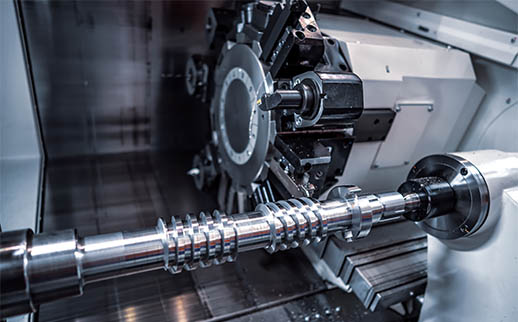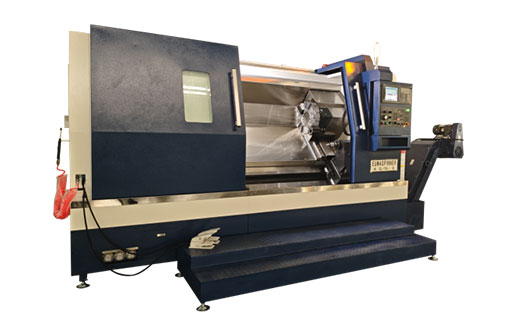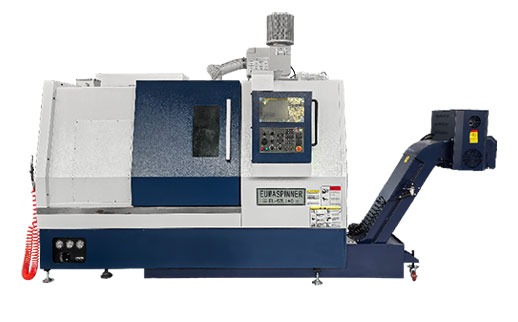In the realm of precision manufacturing, turning and milling are two fundamental machining processes. With the advancement of CNC technology, the integration of these two processes in a single machine—known as turn-mill composite machining—has revolutionized complex part production. This article explores the milling process within turning, its technical principles, applications, and how EUMASPINNER, a leading precision CNC machine tool manufacturer, leverages this technology to deliver cutting-edge solutions.

Turning is a machining process where the workpiece rotates while a stationary tool removes material, primarily used for producing rotational surfaces like cylinders, cones, and threads. It excels in creating axisymmetric parts with high rotational accuracy.Milling, conversely, involves a rotating multi-tooth cutter removing material from a stationary or moving workpiece, capable of machining flat surfaces, slots, contours, and complex 3D geometries. Its versatility stems from various cutter types (end mills, face mills, form cutters) and multi-axis motion capabilities.
Traditionally separate, these processes are seamlessly integrated in turn-mill composite machines (e.g., EUMASPINNER's ultra-precision CNC turn-mill centers), allowing multi-process machining in a single setup.
2.1 Power Turret Technology
The core of turn-mill integration lies in the power turret, which houses motorized milling tools (e.g., end mills, drills). During milling operations, the turret's integrated motor drives the tool spindle, while the machine's linear axes (X, Z, and often Y) control tool movement. For example, while turning a cylindrical workpiece, the power turret can mill flat surfaces, slots, or holes on its side, eliminating the need for secondary setups.
2.2 Multi-Axis Synchronization
Modern turn-mill centers, like EUMASPINNER's 5-axis models, utilize advanced CNC systems to coordinate up to five axes (3 linear + 2 rotational). The rotational axes (A for workpiece tilt, C for spindle rotation) enable the tool to approach the workpiece at any angle, machining inclined surfaces, helical grooves, or sculptured forms that traditional lathes cannot handle. This multi-axis synergy transforms the machine from a "lathe with milling capability" into a true hybrid machining center.
2.3 High-Precision Synchronization Control
Critical to milling in turning is the synchronization between the main spindle (workpiece rotation) and the milling tool spindle. EUMASPINNER's machines employ German-engineered servo systems and backlash-free transmissions to maintain precise speed ratios (e.g., 1:1 for thread milling or indexed drilling), ensuring vibration-free cutting and micron-level accuracy.
3.1 Complex Rotational Parts
Aerospace impellers, medical joint prostheses, and automotive transmission components often combine rotational bodies with intricate 3D features. Turn-mill machining first shapes the cylindrical/base geometry via turning, then mills blades, slots, or pockets in the same setup. This reduces setup errors and minimizes time spent on manual transfers between machines.
3.2 Multi-Process Integration
From roughing to finishing, a single turn-mill center can complete operations like external turning, face milling, drilling, tapping, and even 3D contour milling. For instance, a flange part can have its outer diameter turned, then its bolt-hole circle milled and drilled—all without re-clamping—ensuring perfect concentricity and positional accuracy.
3.3 Precision Micro-Machining
In optics and semiconductor industries, components like lens molds or wafer fixtures demand nanometer-level precision. EUMASPINNER's machines, equipped with thermal stability systems and high-resolution encoders, enable milling of micro-structured surfaces (e.g., diffractive optics) with surface roughness below Ra 0.1μm.
4.1 Enhanced Accuracy through Single Setup
Multiple setups in traditional machining accumulate positioning errors (up to 0.02mm). Turn-mill machining eliminates this by completing all operations in one fixture, achieving geometric tolerances as tight as ±0.001mm for features like perpendicularity and coaxiality.
4.2 Higher Material Removal Efficiency
Milling's multi-tooth cutting action, combined with high-speed spindles (up to 12,000 RPM in EUMASPINNER machines), boosts material removal rate by 30-50% compared to pure turning, especially for tough materials like titanium alloys or Inconel.
4.3 Flexibility for Small-Batch Production
CNC programming allows quick switching between turning and milling modes, making the technology ideal for high-mix, low-volume production. A single machine can handle everything from simple shafts to complex aerospace components with minimal retooling.
Drawing on Taiwanese CNC expertise, EUMASPINNER's turn-mill solutions stand out for:
Rigid Structural Design: Monolithic bed and FEA-optimized frames reduce vibration by 40%, ensuring stable milling even at maximum cutting forces.
Intelligent Thermal Compensation: Real-time temperature sensors and software algorithms correct thermal expansion in real-time, maintaining micron-level accuracy over long machining cycles.
Modular Tooling System: A 24+ station power turret supports quick tool changes and mixed tooling (static turning tools + motorized milling tools), maximizing process versatility.
Advanced CNC Integration: Siemens/Fanuc control systems with proprietary high-speed machining algorithms enable smooth 5-axis interpolation and ultra-precise contouring.
The milling process in turning represents a paradigm shift in precision manufacturing, combining the rotational accuracy of lathes with the geometric flexibility of mills. EUMASPINNER's turn-mill composite machines empower industries like aerospace, medical devices, and precision molds to produce complex parts with unmatched efficiency and accuracy.
Discover how EUMA Machinery's technology can elevate your machining capabilities at www.eumaspinner.com. Contact our engineering team today for customized solutions that redefine precision.



GET A QUOTE